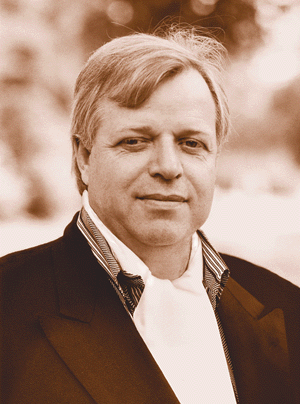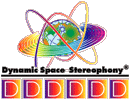


| HOME |
| . |
| LATEST PRODUCTIONS |
| HYMNS |
| SYMPHONIES |
| ORCHESTRA WORKS |
| SOLO CONCERTS |
| ORGAN WORKS |
| MODERN CLASSIC INTERPRETATION |
| ARCHAIC |
| AVANT GARDE |
| ARCHIVE |
| PH’s CLASSICS |
| BOOKS |
| . |
| MAIN LINKS |

With Peter Hübner we have before us one of the most significant and versatile classical composers of our time. Traditionally subject
of great controversy amongst musical experts, the scope of his work ranges
from instrumental concerts and symphonies right through to opera and the great
vocal works of his hymns and – depending of the character of each of
the individual works – from completely harmonic music right through to
the dissonant music of the passions. |
|||||||||
Freedom ! |
Here one finds a creator of music whose works do not follow fashion, but develop
solely out of personal conscience and free will. Today there are more than
1400 CD recordings of his creations, and more than 400 of them are on public
release. |
||||||||
From the Micro Music Laboratories pioneering time |
|||||||||
But since Karajan at the latest, digital techniques have been used during recording,
in order to balance any incompetencies the players might have when playing their
instruments, but also the conductor’s incompetencies, by inserting new
passages and digitally editing in the rest – both, entire orchestra passages
as well as individual soloist’s passages. The fierce international competition in striving for the highest possible artistic perfection and technical precision, practically forces every orchestra to employ digital technology to produce CD recordings to achieve the highest degree of accuracy for the musical work. However, in classical music so far, only a maximum of 3% of such great digital possibilities which are today internationally available are being utilised. The reason being that today’s professionals had and have to do pioneering work to gain their knowledge in this field, and are no longer affordable for such enterprises as orchestra recordings on CD with the required number and range of digital instruments – for the largest item is here not the orchestra and the conductor, but the digital recording team of experts and their complex range of instruments. A general benefit of such modern digital music recording technologies with the aid of sound data banks as well as instruments and programs for digital sound production and processing is that – during recording – each individual element of the composition can be accessed at all time. Here, during the recording of a symphony, a correction can be made at any time to each individual tone – regarding its sound development, its volume changes, its position in the acoustic space, the point in time of its appearance etc. etc. These are all possibilities which every great classical composer has so far only been able to dream of. |
|||||||||
| From the Micro Music Laboratories pioneering time |
|||||||||
The reason for Bach to make do with so few voices in his polyphonic work was solely
a result of the restrictions which the size of the orchestra as well as the
problems of performing more complex work with the orchestra causes – difficulties,
due to which the fixed rhythm finally crept into classical orchestra practice,
which Richard Wagner then tried to tackle with a completely new kind of use
of notation.
Scientific investigations in the Micro Music Laboratories have also shown that every musical instrument needs its own echo situation for its own specific sound, but also for each musical passage to be realised – that is, its own acoustic space size, in order to reproduce the passage in such a way that the listener receives the information the composer has intended for him. This is really quite simple to comprehend even for a layperson. When you perform Händel’s “Messiah” with the rather quick “Hallelujah Chorus” in a large cathedral, the listener can hardly or even not at all differentiate the individual tones in succession, due to the overwhelming echo effect. This means, the musical theme no longer reaches him. And this is even more the case, the further away from the orchestra he is sitting. If the space size of the cathedral could be constantly changed during the performance, such damage would be removed. However, the investigations in the Micro Music Laboratories have shown that it is worthwhile to take this even further and to give special consideration to the sound of the individual instruments and/or the composition’s different sequences of notes. The listener will know how to appreciate this. As a consequence, such a procedure means the simultaneous application of any number of tonal spaces variable in their size. And here the absolute limit for conventional orchestra practice has been reached. This imperatively requires such modern developments of Dynamic Space Stereophony which then, however, can only be demonstrated to its best advantage during a multi-channel performance in a concerthall – in contrast to the stereophonic recording on a CD. With such enormous revolutions, the consequences for concert-halls, opera-houses as well as radio and TV are foreseeable. A further great benefit of such digital music production technologies lies in the power over interpretation which can now be tackled to a totally different extent than we have known so far. If you think that the musician can dominate all the finest nuances of his tonal design that are at all audible without any pressure at all from time and circumstances relating to the performance, that he can naturally go beyond the scope of the natural limitations he and his instrument entail – starting with the duration of tone to the speed of playing, the accurate performance of complex rhythmical structures, the expansion of the range, the control over his instrument's overtone mechanics, from the volume to the finest nuances of articulation –, then – besides the great dream of the classical tone creators – that of the musician groaning under the limitations of his instrument as well as his own anatomical obstacles will also come true. The Micro Music Laboratories therefore want to make sure that the productions of the parts of the different instruments are monitored by excellent artists who use these instruments. In the way described, the work of the composer Peter Hübner introduced in this publication, was realised in the Micro Music Laboratories with often more than 1000 polyphonic voices in 1000 tonal spaces developing in a different way – until now an unimaginable thought in musical history and among music experts. This artistic and tonal extent could only be made clearly audible on CD by including Dynamic Space Stereophony. However, for the complete acoustic performance it is waiting for the new technological development of the equipment which is linked to the Dynamic Space Stereophony and the PH-Diamond Hall, the philharmonic of a new epoch – substantial developments which, in significance, by far exceed the quantity of the work created by this composer and which is praised to the skies. Thus, it is understandable that the work by the classical tone creator Peter Hübner, which has been listed in this publication and recorded on CD, could not be recorded “live” with a conventional orchestra and/or choirs or soloists, but that this was only made possible by using the range of complex digital instruments and knowhow available in the Micro Music Laboratories. What has been said so far must suffice at this point as an explanation, for a detailed explanation of the concrete production of each single piece of work could open up an unlimited field of logical arguments – which would go far beyond the scope of this documentation, and which, in particular cases is to be done in further editions of CLASSIC LIFE. After all, this is first and foremost about music which is, of course, available and can be heard on CD. www.deutscheakademiedermusik.de |
|||||||||